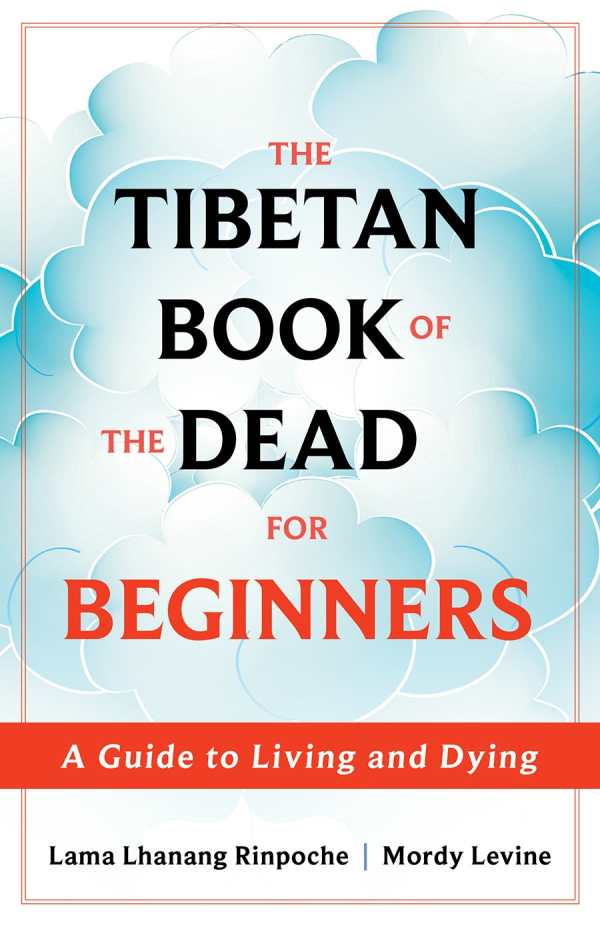The Tibetan Book of the Dead for Beginners
A Guide to Living and Dying
“What if death can truly become part of the cycle of life?” That rhetorical question animates Lama Lhanang Rinpoche and Mordy Levine’s The Tibetan Book of the Dead for Beginners, which explicates the Buddhist text, sharing practical, reassuring wisdom for daily life and end-of-life preparations.
Rinpoche and Levine begin with background information: The Tibetan Book of the Dead, written by eighth-century Buddhist master Padmasambhava, was discovered in Tibet in the fourteenth century. Its central principle is “how we live is how we will die.” Buddhism does not believe in souls, but in a consciousness that is reborn. And there are six bardos (time periods)—three during life, and three just after it: dying; “luminosity,” when audiovisual experiences continue; and “becoming,” which precedes rebirth.
Helpful definitions of key Buddhist doctrines, starting with karma, play in. There’s a sense that, while every human action has consequences, what matters is one’s intentions. Bad karma, the book says, can be purified through confession and making righteous decisions in the future. And the self is mutable, so one should not be attached to false self-images. Herein, the goal is to be less reactive; one’s state of mind is all that can be controlled.
The book ably demystifies concepts that seem esoteric, taking a peaceful approach to a subject that sometimes causes anxiety while corroborating Western notions of the phases of dying. Its parabolic metaphors employ familiar objects, like seeds and a bank account, to maximize clarity. There are also brief stories, representative of common issues, shared, while breathing and visualization exercises and meditations represent ways of incorporating the book’s spiritual practices in everyday life.
With recommendations for supporting dying loved ones, even from a distance, The Tibetan Book of the Dead for Beginners blends its mysticism with down-to-earth advice.
Reviewed by
Rebecca Foster
Disclosure: This article is not an endorsement, but a review. The publisher of this book provided free copies of the book to have their book reviewed by a professional reviewer. No fee was paid by the publisher for this review. Foreword Reviews only recommends books that we love. Foreword Magazine, Inc. is disclosing this in accordance with the Federal Trade Commission’s 16 CFR, Part 255.

